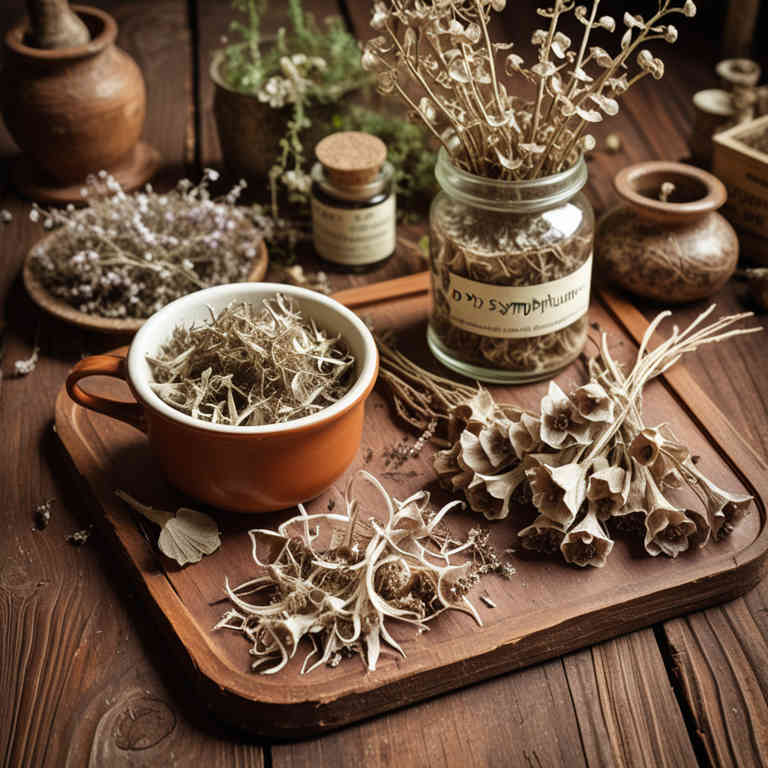Symphytum officinale decoction for medicinal use

Symphytum officinale decoction is a herbal preparation made by boiling the roots of the comfrey plant.
It is traditionally used in herbalism to support bone and tissue healing, particularly for fractures and bruises. The decoction is often applied externally as a poultice or compress to promote inflammation reduction and cell regeneration. It is valued for its high concentration of allantoin, which has soothing and healing properties.
However, it should be used with caution due to potential toxicity if ingested in large amounts.
Uses
Symphytum officinale decoction has been used to treat various ailments throughout history, particularly in traditional medicine for its healing properties.
Historically, it was valued by ancient civilizations such as the Greeks and Romans for its ability to promote wound healing and relieve pain. In traditional herbal practices, it was commonly used to address bone fractures, muscle pain, and skin conditions due to its anti-inflammatory and regenerative effects. Modern research has explored its potential in supporting tissue repair and reducing inflammation, though its use is often limited due to the presence of toxic compounds.
Today, it is still used in some alternative medicine practices with caution and under professional guidance.
Benefits
Symphytum officinale decoction has health benefits such as promoting wound healing, reducing inflammation, and supporting bone health.
It is traditionally used to treat bruises, sprains, and other musculoskeletal injuries due to its ability to stimulate tissue repair. The decoction may also aid in digestive health by soothing the gastrointestinal tract and alleviating conditions like indigestion or gastritis. Additionally, it has been used historically for its potential to support skin health and reduce pain associated with inflammatory conditions.
However, it should be used with caution as it contains pyrrolizidine alkaloids, which can be toxic in high doses.
Constituents
Symphytum officinale decoction active constituents include allantoin, mucilage, alkaloids, and tannins.
These compounds contribute to the plant's traditional use in promoting wound healing and reducing inflammation. Allantoin is known for its skin-soothing properties, while mucilage acts as a demulcent to protect and moisturize tissues. Alkaloids may have analgesic effects, and tannins provide astringent properties that help in reducing swelling.
This decoction is often used for its potential benefits in treating skin conditions and supporting digestive health.
Preparation
To make Symphytum officinale decoction, first gather fresh or dried roots of the plant, ensuring they are free from contaminants.
Wash the roots thoroughly and chop them into small pieces to increase surface area for extraction. Place the chopped roots in a pot and add about 250 ml of water, bringing it to a gentle simmer over medium heat. Let the mixture steep for 20-30 minutes, then strain the liquid through a fine mesh or cheesecloth to remove plant material.
The resulting decoction can be taken in small doses, typically 1-2 tablespoons up to three times a day, depending on the intended use and individual response.
Side Effects
Symphytum officinale decoction may lead to gastrointestinal discomfort, including nausea, vomiting, and diarrhea, due to its high content of pyrrolizidine alkaloids.
These compounds can be toxic to the liver and may cause hepatic damage with prolonged use. It is also associated with the risk of hemolytic anemia, as the alkaloids can damage red blood cells. The preparation should be used with caution, especially in individuals with pre-existing liver conditions or those taking medications metabolized by the liver.
Due to these potential risks, it is advisable to consult a healthcare professional before using Symphytum officinale decoction.